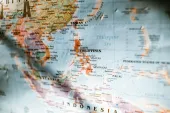
Bank of China’s diverse portfolio to weather default storm over next two years
BOC’s non-performing asset ratio is expected to steadily decline in the next 24 months.
Bank of China’s (BOC) diverse exposures will help it weather the rising loan defaults amidst lingering pandemic ill-effects and as economic recovery overseas remains uneven, S&P Global Ratings reported.
BOC's profits grew 10% during the first half of 2021 compared to the same period in 2020, helped by lower impairment losses.
The bank's non-performing loan (NPL) ratio was at 1.3%, down from end-2020. This partly contributed to its credit cost falling to 0.65% during this period, and for the bank to maintain a stable NPL coverage ratio (184%) as of end-June.
Meanwhile, BOC's overseas NPL ratio remained low at 0.72% of loans, mitigating pressure on the group's asset quality metrics. In comparison, the bank’s mainland Chinese NPL ratio is at 1.44% of total loans.
BOC is expected to see less asset quality pressure than last year as COVID impacts subside, S&P said.
“BOC's non-performing asset (NPA) ratio has peaked and will steadily decline in the next 24 months, in our view. This is notwithstanding rising NPLs overseas and in certain sectors, such as manufacturing and real estate, in the first half of this year. Lingering pandemic effects and the unwinding of loan moratoriums will continue to drive NPLs higher in such segments,” the report read.
However, BOC is not yet in la-la-land, with the bank’s credit costs expected to remain elevated in the next two years.
“We expect BOC's credit cost to remain elevated in the next two years, keeping its NPL provision coverage stable,” S&P said, adding that this will boost the bank's NPA provision coverage to above 80% by the end of 2022 as forborne loans decline.
Meanwhile, steady revenue growth and strong cost discipline will underpin BOC's profitability. Revenue was up about 6% in the first half of this year compared to the same period in 2020. This was thanks to strong loan and fee income growth, which reportedly offset a weaker net interest margin that was still weighed down by loan prime rate repricing, S&P said.
Meanwhile, overseas lending grew faster amidst economic rebalancing at home. The bank's return on average assets stabilized at 0.93% annualized, from 0.92% a year ago.
“BOC's stable profitability and capital issuance will keep its capitalization adequate,” S&P said. “The entity's funding and liquidity profile remain healthy, as deposit growth has kept pace with loans.”
The bank's loan-to-deposit ratio was also stable at 84.6% as of end-June.



















 Advertise
Advertise







